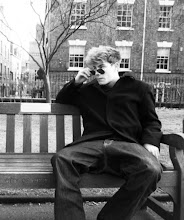The band featured in the article are The Gaslight Anthem are punk rock band, they’re music appeals to “punk, soft soul, pretty faces and yearning hearts”. Their bands main influence was Bruce Springsteen. The target audience for this article are 18+, university students, punk-rock fans, soul fans. Also it is mentioned in the article that they’re music targets a wide range of music genres and audience, as they combine soul with punk.
What type of language is used in the article? Give examples of words or phrases which are specific to the style of the magazine.
The language used in the article is formal and persuasive. There is little use of informal and colloquial language. “The following day, before an even more transcendent show at London’s ULU, Brian recalls the epiphany”.
This is an example of the formal language.
“But if experience hangs heavy on Gaslight, this isn’t dour music. Neither is it protest rock made by militant revolutionaries out tot change the world; they’re about the thrill and thunder and the chance and the righteous power of rock n roll to transcend what’s mundane”. This is an example of persuasive language that is used in the article.
How is colour used?
The colours used in the magazine are bland and neutral colours. The use of blue, white and red colours shows that the band is patriotic. Also the use of big, black font gives the punky feel to the article.
What style of text is used? Is it similar to any other pages? What does it say about the image of the magazine and the audience?
It uses standard serif, punky, and grunge. This type of font appeals to the target audience, it appeals to American people. This font links with the theme of the article and the band. The font used in this article is the same as all the other articles; however the way the page is laid out is different from the rest.
How is the double page spread laid out? How much of the pages are taken up by images and how much by text? How does this reflect the audience? What do they value?
The way the double page spread is laid out is, there is a photo of the band on the left side and on the right side there is the article. This uses the theory of z-line and also most magazines feature less important information the left side such as the photo, and the more important information on the right such as the article. The whole left page is taken up by the band and the whole right page includes the article. The way this reflects the audience and what they value is the audience would like to see a photo of the band but at the same time want information on the band and an opinion.
What tone is the magazine using when addressing the reader (as a close friend, a member of an 'in' crowd or an informed intelligent fan?) - provide evidence.
The way this magazine addresses the reader is that it uses formal language, but expects the person to be a member of an informed crowd i.e. fan. This makes the reader feel more part of the article/ social group. Also the audience are expected to be musically cultured and are expected to have good knowledge of music and a good taste. The kind of person that would listen to their music would be daring and are confident. The band’s style is raw and quite simple; they don’t have the good look boy band feel as other bands. The quote on the left page says “Unless you go out on a limb, you’re never gonna be able to get out”. This quote hints at the type of people that listen to this band all follow their trends, are quite daring and confident, not scared to be different. Also other musicians that are mentioned are not as well known today as the music industry has moved on, however the reader is expected to know all of these artists which means that the reader is expected to be musically educated. They mention musicians like Bruce Springsteen and Miles Davis a famous jazz musician.
How is the artist/band presented to the audience through the images? You may wish to carry out a textual analysis.
The way the band is presented to the audience through their images is, the main image is very casual which shows that the band has a raw and simple style. One of the members is dressed in plain jeans while the other member is showing off his tattoos. Also the background to the photo is taken in some scarp-yard or warehouse. This gives the authentic band an authentic look and this helps represent the bands style well. The photo taken off the band looks as if they weren’t ready; this gives a laid back impression.
How does the style of the article match the style of the front cover?
The article carries out the theme from the front cover and the contents page onto the article. The use of red, blue and black are the colour theme of NME. The black and the red are included in the contents, which are the two main colours used in the magazine. The white background in the article and the inclusion of blue represents the band and the American flag.
Does the article demand any prior knowledge? Give examples.
The article does demand prior knowledge of the band and also good music knowledge based around the band from different music genres such as jazz, soul and punk. The writer expects the person to be members of an informed crowd i.e. fan. This makes the reader feel more part of the article/ social group. Also the audience are expected to be musically cultured and are expected to have good knowledge of music and a good taste.





















